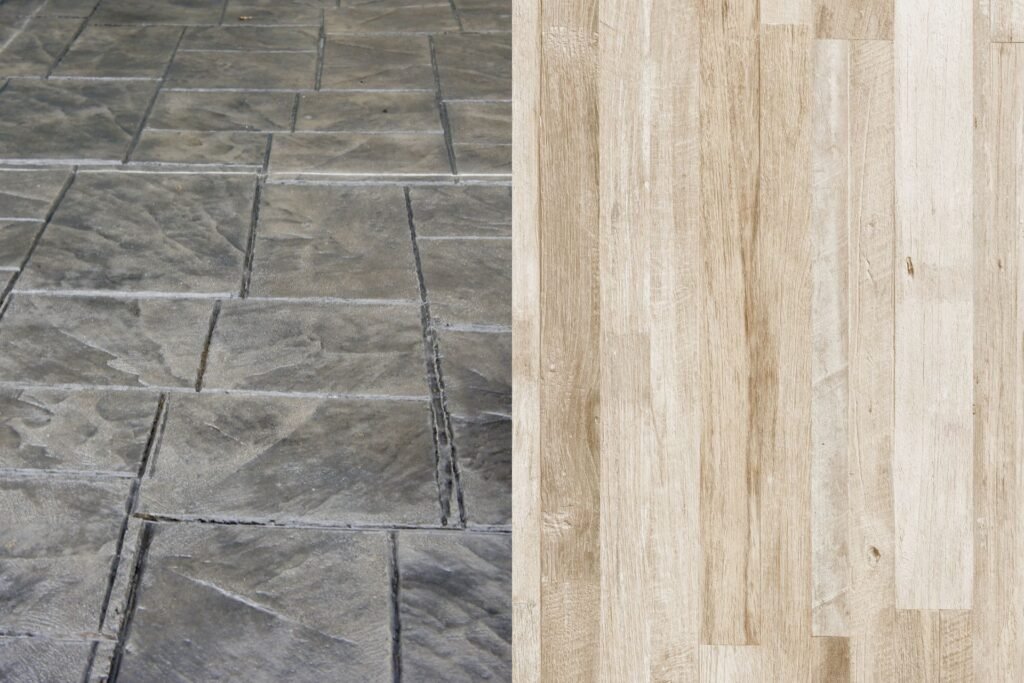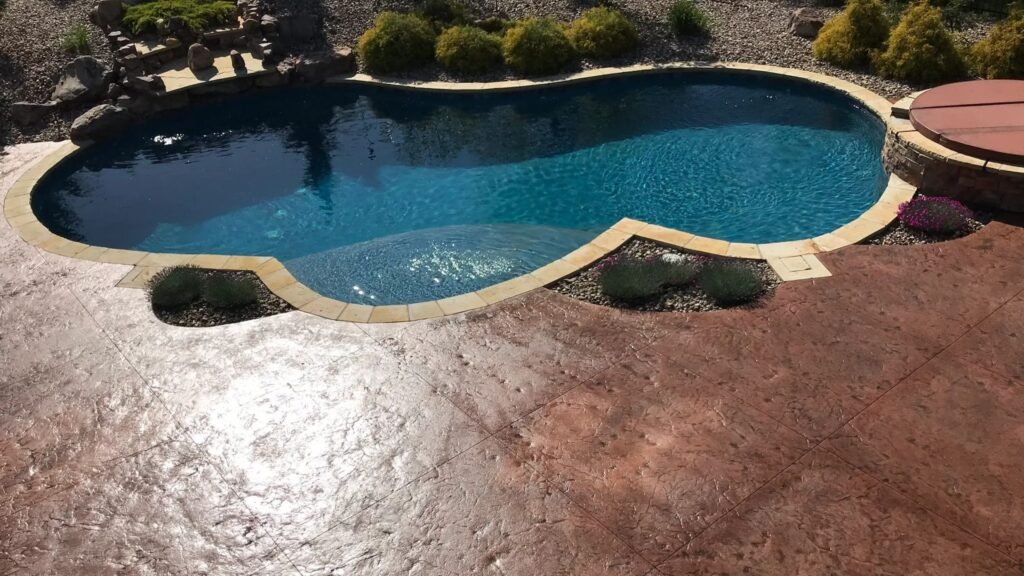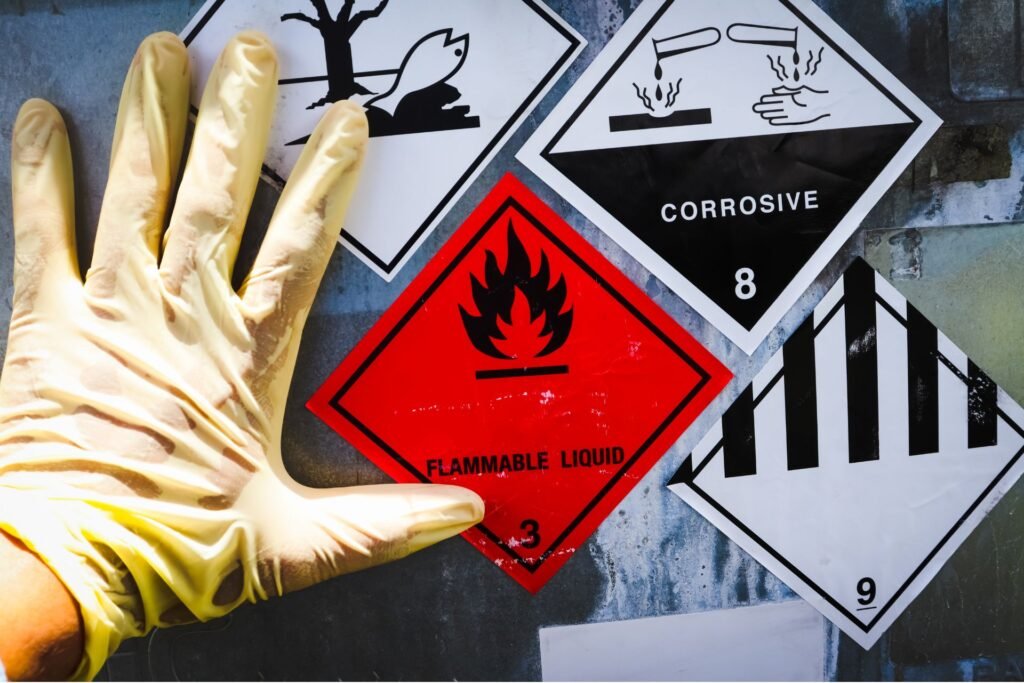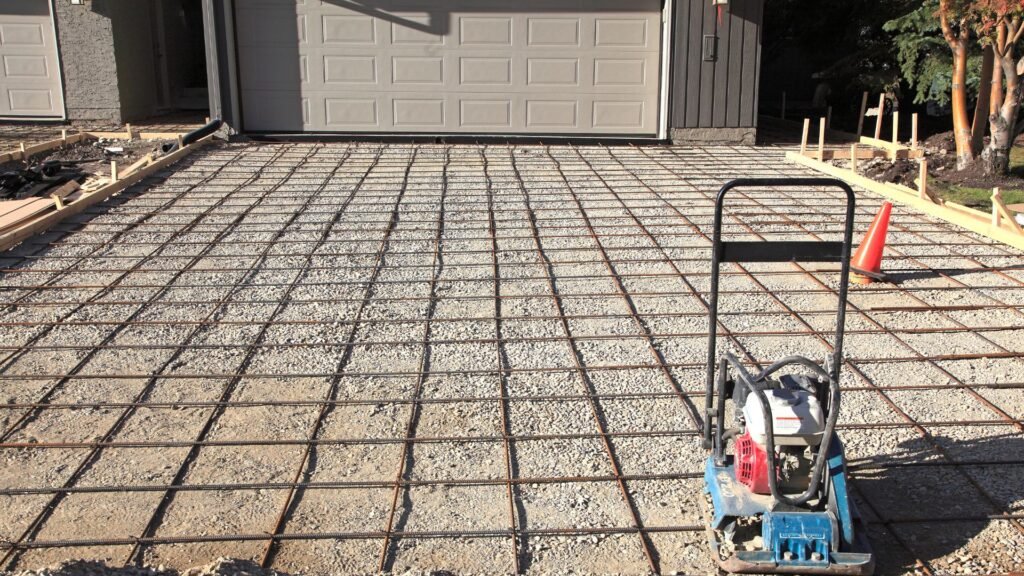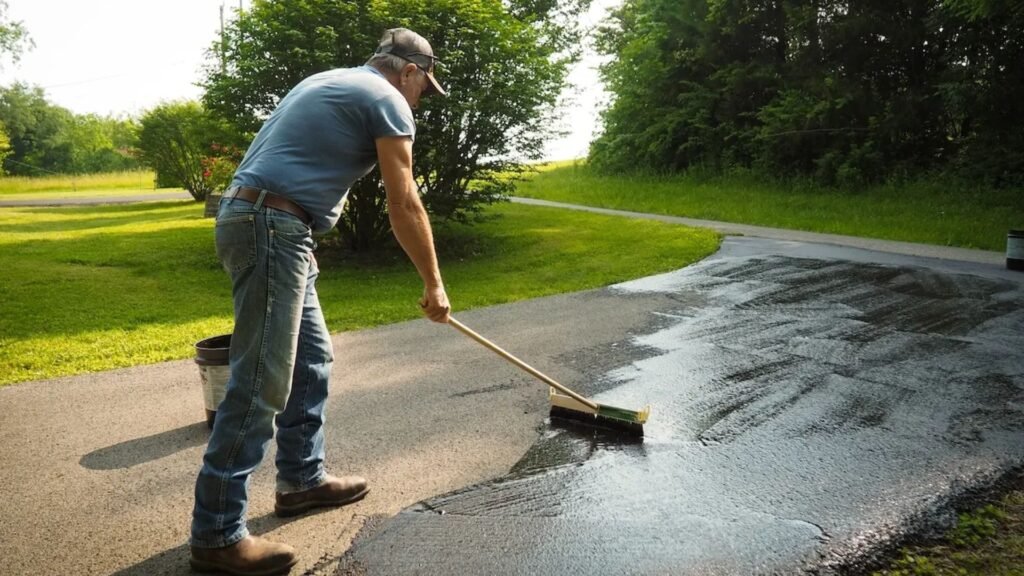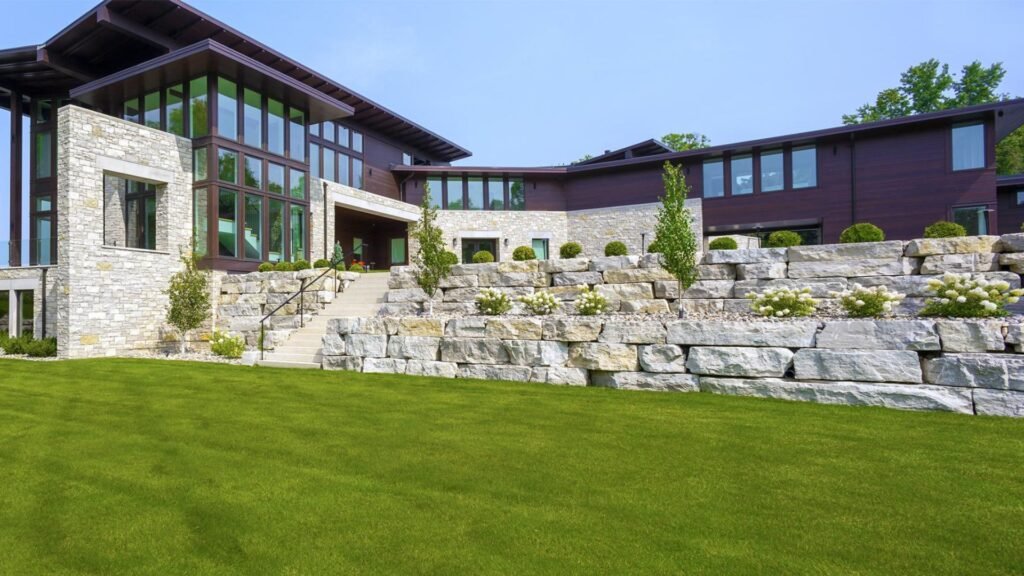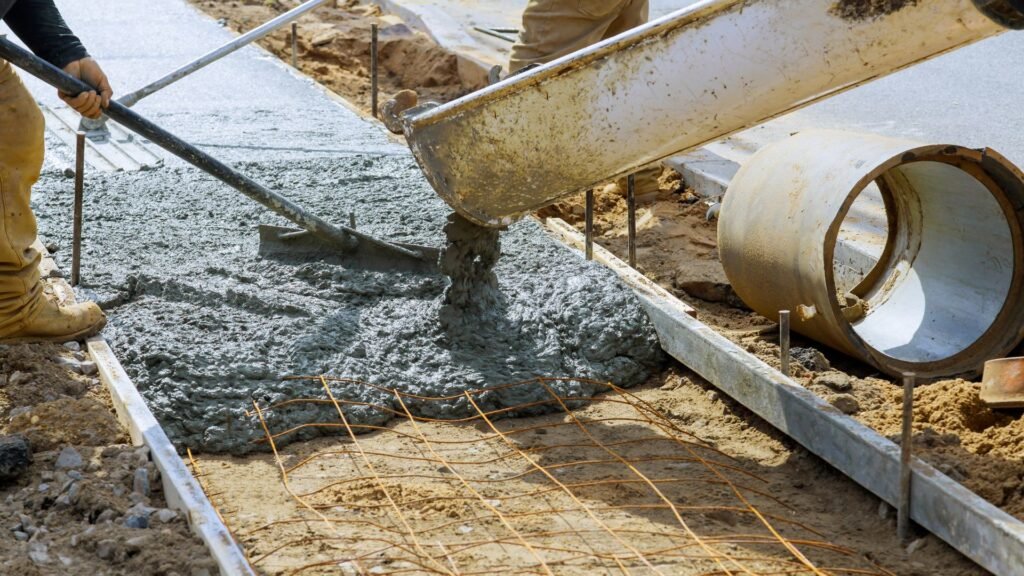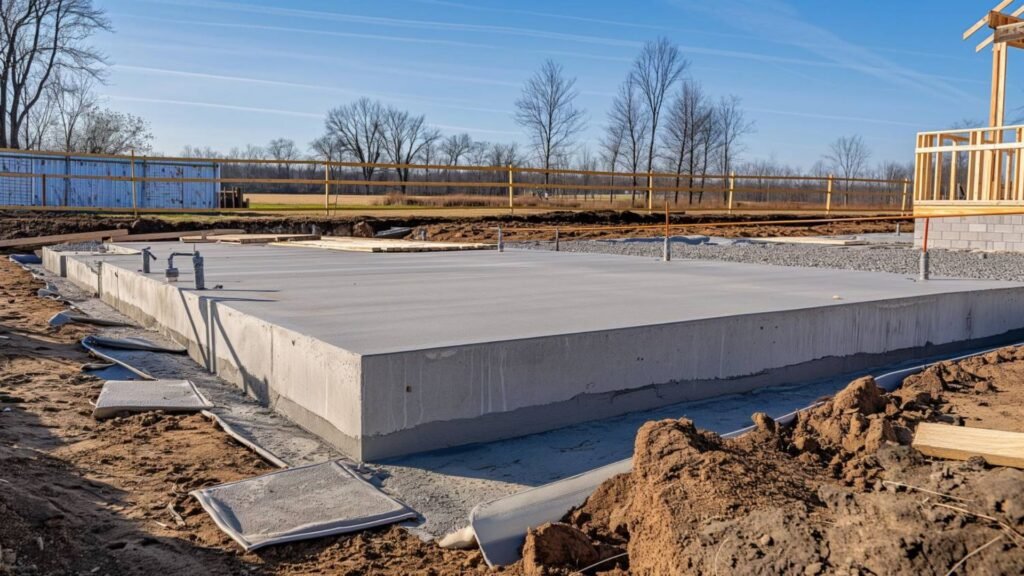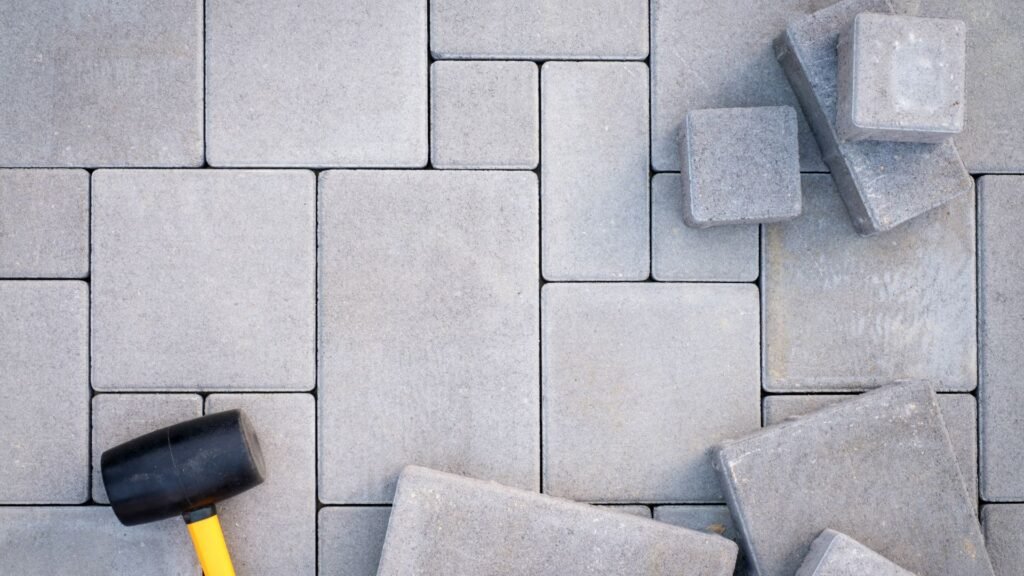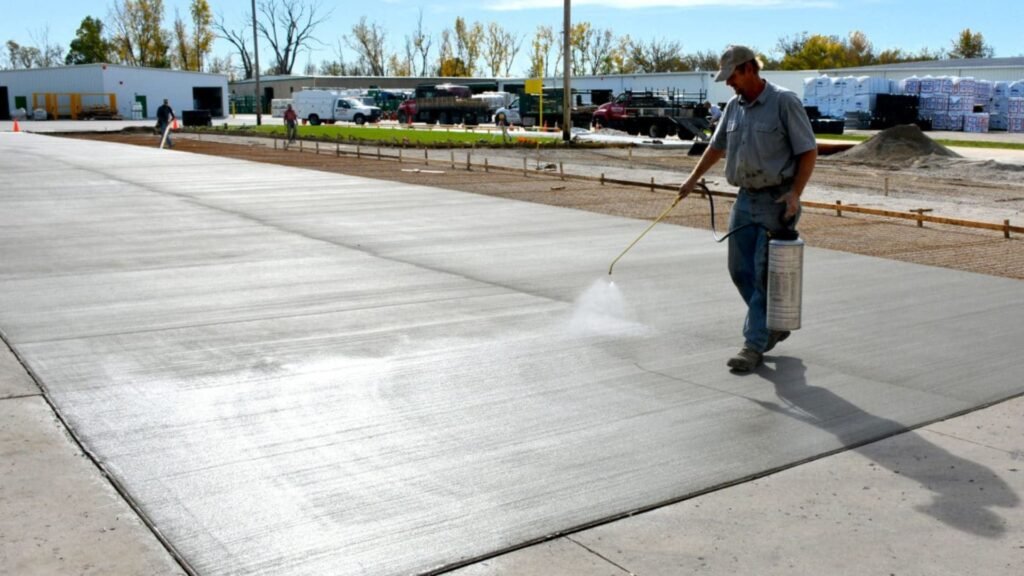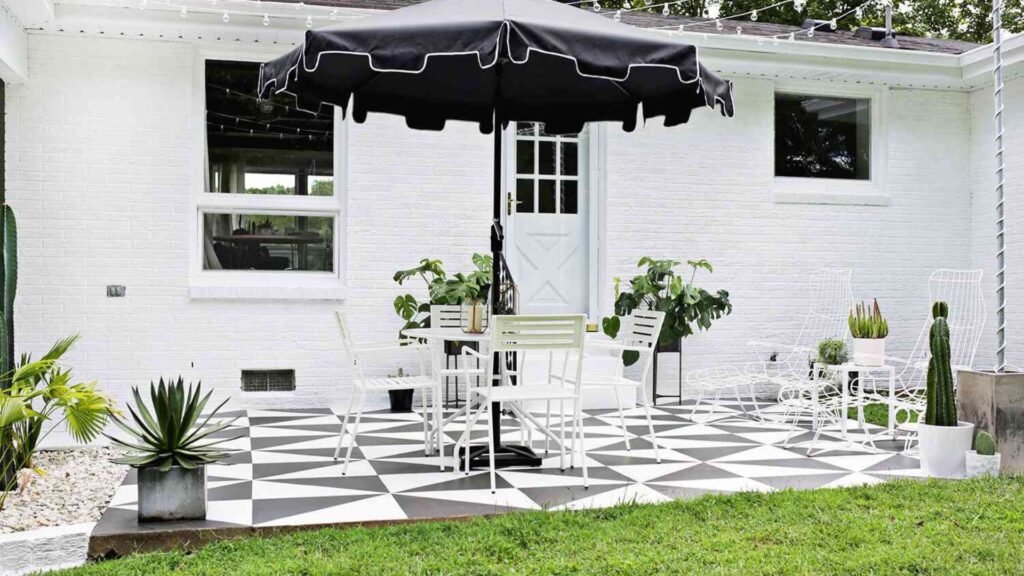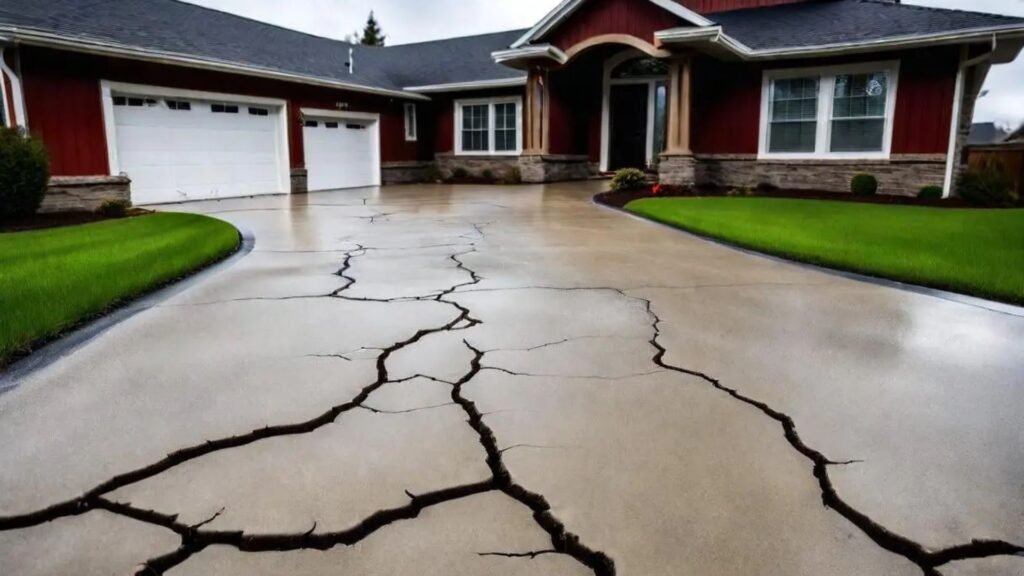Welcome to your ultimate guide on whether you should paint or seal your concrete patio. If your patio is starting to show signs of wear or you’re just looking to refresh its appearance, you’re likely wondering which option is best for you. Maintaining your patio not only keeps it looking great but also extends its life, protecting it from weather damage and daily wear and tear. In this article, we’ll break down the key differences between painting and sealing, weigh the pros and cons of each, and help you make an informed decision based on your specific needs. Whether you’re after durability, ease of maintenance, or a decorative finish, we’ve got you covered.
Painting your concrete patio offers a wide range of color options and aesthetic appeal while sealing provides long-lasting protection against weather, moisture, and stains. If you want a decorative look, painting may be ideal, but for durability and easier maintenance, sealing is the better option. Consider your climate, desired look, and upkeep needs to decide whether painting or sealing is right for your patio.
Table of Contents
Understanding Concrete Patio Maintenance
Concrete patios can significantly enhance the aesthetics of outdoor spaces while offering durability and versatility. However, like any other surface exposed to the elements, concrete requires regular care to maintain its integrity and appearance. Failing to maintain your concrete patio can lead to several long-term problems while taking proactive steps to protect it ensures it stays in great shape for years to come.
What Happens If You Don’t Maintain Your Concrete Patio?
When a concrete patio is left untreated or without regular maintenance, several issues can arise. The most common problems include:
- Cracking: One of the first signs of a neglected patio is cracking. Concrete expands and contracts with temperature changes, and without proper maintenance, these fluctuations can cause the material to crack. Even small cracks can worsen over time, leading to larger structural problems and potentially costly repairs.
- Discoloration: Over time, exposure to UV rays, rain, and dirt can cause the patio surface to become discolored. Unprotected concrete is susceptible to fading and staining, leaving it looking dull and unattractive. Oil spills, leaves, and rust from outdoor furniture can also cause unsightly stains that are difficult to remove if not addressed promptly.
- Water Damage: Concrete is a porous material, meaning water can easily seep into its surface. If water consistently penetrates the concrete, especially during colder months, it can freeze and expand, leading to even more cracking and degradation. Additionally, excessive moisture can cause mold and mildew to develop, further damaging the patio’s structure and appearance.
Neglecting your concrete patio not only affects its look but also shortens its lifespan. Regular upkeep, including cleaning, sealing, and repairs, helps to preserve its beauty and functionality for the long term. By investing a little time in maintenance, homeowners can avoid costly restoration down the line.
Why Protect Your Patio Surface?
Protecting your concrete patio from the wear and tear of everyday use and the harshness of the elements is crucial if you want it to stay in pristine condition. Here’s why:
- Prevent Wear and Tear: With constant foot traffic, outdoor furniture, and exposure to weather, the surface of your patio can wear down over time. Small surface imperfections can become larger, and the overall appearance of the patio can deteriorate. Applying a protective layer, such as a sealant or paint, creates a barrier between the concrete and these external factors, preventing unnecessary damage.
- Weather Resistance: Weather is one of the most damaging elements for a concrete patio. Rain, snow, and even extreme heat can take a toll on unprotected concrete. Sealing your patio can help reduce water penetration, while painting provides an additional layer of protection against UV rays, helping to prevent fading and discoloration.
- Extended Longevity: Protecting the surface of your patio prolongs its life. Sealants, for example, fill in the tiny pores on the concrete’s surface, preventing water, dirt, and other debris from settling in and causing damage. Both sealing and painting act as preventive measures, saving you time and money on repairs by keeping your patio looking fresh and intact for many years.
- Enhanced Appearance: Sealing or painting your patio can also enhance its aesthetic appeal. Sealants often give the concrete a glossy or matte finish, depending on your preference, while painting offers the opportunity to customize the color and look of your outdoor space. Not only does this improve the visual appeal, but it also helps protect your investment by keeping the patio’s surface clean, uniform, and attractive.
In summary, regular maintenance and protection of your concrete patio are essential for both functional and aesthetic reasons. By taking steps to safeguard it from common issues like cracking, water damage, and fading, you ensure it remains a durable and beautiful part of your outdoor space for years to come. Whether you choose to seal or paint your patio, these protective measures provide long-lasting benefits that far outweigh the initial effort.

The Difference Between Painting And Sealing
Concrete surfaces, whether in driveways, patios, or floors, can benefit from protection and aesthetic improvement. Two popular methods to achieve this are painting and sealing. However, each approach serves a different purpose and has unique advantages and limitations. Understanding the difference between painting and sealing concrete can help you make the right choice based on your specific needs.
What Is Concrete Paint?
Concrete paint is a specially formulated product designed to adhere to concrete surfaces, providing an appealing and durable finish. It works by coating the surface with a layer of paint, enhancing the look and feel of otherwise dull, gray concrete. Concrete paint is available in a wide variety of colors, allowing homeowners and businesses to customize their concrete surfaces to match their décor or brand. Whether you’re looking to brighten up a garage floor or add color to a patio, concrete paint offers flexibility in terms of design.
One of the main reasons people choose concrete paint is its visual appeal. The range of colors and finishes, such as matte or glossy, provides endless possibilities for customization. Whether you prefer a subtle, neutral shade or a vibrant pop of color, concrete paint can bring life to your space.
Pros of Using Concrete Paint
- Aesthetic Customization: The ability to choose from various colors and finishes makes concrete paint a great option for those prioritizing appearance.
- Easy to Apply: Most concrete paints can be applied with a roller or brush, making it a relatively straightforward DIY project.
- Affordable: Compared to other options, concrete paint is often a cost-effective solution for revamping your space.
Cons of Using Concrete Paint
- Chipping and Peeling: Over time, painted concrete surfaces may experience wear and tear, leading to chipping, peeling, or fading. High-traffic areas, in particular, may require frequent touch-ups or reapplication.
- Limited Durability: While paint provides a good initial finish, it doesn’t offer much protection against external elements such as moisture or heavy foot traffic.
- Regular Maintenance: To keep the painted surface looking fresh, ongoing maintenance, including periodic repainting, is necessary.
What Is a Concrete Sealer?
A concrete sealer, unlike paint, is primarily used for protection rather than aesthetics. Its main function is to safeguard concrete from damage caused by moisture, stains, UV rays, and other environmental factors. Concrete is a porous material, meaning it can easily absorb water and chemicals, leading to cracking, discoloration, or other forms of deterioration. Sealers work by creating a protective barrier that keeps out harmful substances, extending the life and durability of the concrete surface.
There are different types of concrete sealers, each serving a specific purpose. Penetrating sealers are designed to seep into the concrete, providing deep protection without altering the surface’s appearance. These are often used for outdoor applications, where weather and moisture resistance are critical. On the other hand, surface sealers (like acrylic or epoxy sealers) sit on top of the concrete, offering a layer of defense while enhancing the surface with a slight sheen or gloss.
Pros of Using a Concrete Sealer
- Superior Protection: Sealers protect concrete from water, chemicals, stains, and even UV damage, preventing cracks, discoloration, and erosion.
- Low Maintenance: Once applied, sealers generally require minimal upkeep. Occasional reapplication might be needed, but they are less prone to wear and tear compared to paint.
- Natural Finish: For those who prefer the natural look of concrete, sealers offer protection without significantly altering the appearance of the surface.
Cons of Using a Concrete Sealer
- Limited Aesthetic Options: While sealers protect concrete, they don’t offer the same level of customization as paint. If you’re looking for vibrant color or dramatic changes, sealing might not provide the visual impact you’re seeking.
- Slick Surface: Some sealers, especially those with a high-gloss finish, can make the surface slippery when wet. This might not be ideal for areas with heavy foot traffic or outdoor surfaces.
Choosing between painting and sealing depends on your priorities. If visual appeal and customization are important to you, concrete paint may be the better option, though it comes with the trade-off of more frequent maintenance. However, if protection and longevity are your main concerns, a concrete sealer will provide the durable defense your surface needs, with minimal upkeep. Both options offer benefits, so consider the specific requirements of your concrete surface before making a decision.

Factors To Consider Before Deciding
When choosing between painting or sealing your patio, several key factors must be weighed. Your decision will impact the longevity, aesthetic appeal, and maintenance of your outdoor space. Below, we’ll dive into critical aspects that should influence your choice.
Climate and Environmental Conditions
The local climate plays a significant role in determining whether painting or sealing is the best option for your patio. For instance, regions that experience extreme cold, with cycles of freezing and thawing, can cause paint to crack and peel over time. This is due to the expansion and contraction of materials as temperatures fluctuate. In contrast, sealers may handle this better because they penetrate the surface, offering more flexibility without cracking.
In hot, sunny climates, intense UV exposure can cause both paint and sealers to degrade, but they do so differently. UV rays tend to fade painted surfaces quickly, requiring more frequent reapplication. Sealers, especially those with UV inhibitors, may hold up longer but could still lose their effectiveness in preventing moisture penetration over time.
Moisture is another crucial environmental consideration. Areas with high humidity or frequent rain may lead to moisture-related issues like mold, mildew, and rot. Paint tends to trap moisture, leading to bubbling and peeling. On the other hand, a high-quality sealer can allow moisture to escape while protecting against damage, but it needs to be reapplied periodically to maintain effectiveness.
Aesthetic Goals
Your desired look is a major factor in deciding between painting or sealing your patio. If you’re aiming for a decorative finish with a range of color options, paint offers more versatility. You can select from various hues and textures to complement your home’s exterior or create a bold, standout design. Painted surfaces can be used to introduce patterns or intricate designs, making it a popular choice for homeowners who prioritize customization.
On the other hand, if you prefer a more natural, subtle appearance that enhances the raw beauty of materials like concrete or stone, a clear sealer might be the better option. Sealers allow the natural texture and color of the patio material to shine through while still offering protection. They are especially useful for those who want a minimalist look that feels organic and blends with the surroundings.
Durability and Longevity
When it comes to durability, there are clear differences between paint and sealers. Painted patios typically need reapplication every 2 to 3 years, depending on the climate and the quality of the paint used. Paint is more prone to peeling and chipping, especially in high-traffic areas, so it may require touch-ups more often.
Sealers, particularly penetrating sealers, offer longer-lasting protection. Some high-end sealers can last 3 to 5 years or more before needing reapplication, and they tend to wear more gracefully, gradually fading rather than peeling. However, the longevity of both options will vary based on environmental exposure and the amount of foot traffic on the patio.
Maintenance Requirements
Maintenance is another area where painting and sealing differ significantly. Painted patios require regular upkeep to maintain their appearance. Over time, paint can chip, peel, or fade, necessitating touch-ups or complete reapplication. The cleaning process for painted surfaces is relatively straightforward, but any damage will require immediate attention to prevent further deterioration.
Sealed patios, in contrast, are generally easier to maintain. Most sealers create a protective barrier that repels dirt, moisture, and other contaminants, making cleaning simpler. A quick sweep or occasional hose down is often all that’s needed to keep a sealed patio looking fresh. However, the sealer itself will wear down over time, and reapplication is essential to maintain its protective qualities.
Cost Comparison
Cost is always a major consideration when deciding between painting and sealing your patio. Initial costs for painting tend to be higher because it requires more preparation, such as priming and multiple coats of paint. Additionally, higher-quality paints designed for outdoor use can be expensive.
Sealers generally have a lower upfront cost, especially for penetrating sealers that don’t require as much surface preparation. However, the long-term costs can differ. Painted patios may require more frequent touch-ups and reapplication, leading to higher labor and material costs over time. Sealers, while generally needing less frequent reapplication, can still add up in cost, especially if you opt for premium products or live in an area with harsh environmental conditions that require more frequent maintenance.
In the end, the total cost should factor in not just the initial expense, but also the frequency of maintenance and reapplication over the years.
When deciding whether to paint or seal your patio, consider the local climate, your aesthetic preferences, the durability of each option, maintenance requirements, and long-term costs. Both painting and sealing have their unique advantages and challenges, so understanding how these factors align with your specific needs will help you make the best decision for your outdoor space.

Pros And Cons Of Painting Your Concrete Patio
When it comes to transforming a concrete patio, painting can be an appealing option. It’s a cost-effective way to breathe new life into an outdoor space, allowing homeowners to inject their style and make the patio more than just a bland slab of concrete. However, like any home improvement project, painting your concrete patio comes with its share of advantages and disadvantages. Let’s dive into the key benefits and potential downsides so you can make an informed decision.
Benefits of Painting a Concrete Patio
1. Customization at Its Best
One of the top reasons homeowners choose to paint their concrete patio is the endless design possibilities it offers. You aren’t limited to the standard gray of unpainted concrete painting gives you the freedom to pick virtually any color, that matches your outdoor decor or personal taste. Whether you prefer a bold, vibrant color scheme or a more subtle, natural tone, painting allows you to fully customize your space. You can even experiment with patterns or designs, like stenciling, that mimic more expensive materials such as tile or stone.
2. Slip-Resistant Textures
Safety is another crucial factor, especially in outdoor areas exposed to moisture. Fortunately, many concrete paints are formulated with slip-resistant additives, reducing the risk of slips and falls. This is especially helpful for families with children, and seniors, or in regions where patios often get wet from rain or pool water. It adds an extra layer of protection, which is a significant advantage over leaving concrete uncoated.
3. A Decorative Upgrade
For those looking to enhance the overall aesthetic appeal of their outdoor space, painting can provide an immediate decorative uplift. It’s an excellent way to make a patio visually appealing without committing to a major renovation. Homeowners who entertain guests or spend a lot of time outdoors will appreciate how a fresh coat of paint can turn an ordinary patio into an inviting outdoor living space. Whether you’re going for a modern or rustic look, painted concrete can help tie the entire look of your outdoor area together.
Drawbacks of Painting a Concrete Patio
1. Peeling, Cracking, and Fading
While painting a concrete patio comes with aesthetic benefits, it also requires regular maintenance. Concrete naturally expands and contracts with temperature changes, which can cause the paint to peel or crack over time. Fading from UV exposure is another common issue, particularly in areas that receive a lot of direct sunlight. Once the paint starts to deteriorate, it can make the patio look worse than if it were left untreated, requiring frequent touch-ups or complete reapplication.
2. Frequent Reapplication
Compared to other finishing options, such as sealing, painted concrete tends to have a shorter lifespan. This is particularly true in high-traffic areas or places subjected to weather extremes. As a result, homeowners often find themselves having to repaint every few years to maintain the patio’s appearance. For some, the added time and cost of regular maintenance may outweigh the initial aesthetic appeal.
3. Durability in Challenging Conditions
Concrete patios located in areas with harsh weather conditions, such as extreme heat, freezing temperatures, or heavy rainfall, may not hold up well with just a coat of paint. In such environments, the paint can wear down more quickly, leading to cracking, chipping, or peeling. Heavy foot traffic or outdoor furniture being moved around frequently can also cause premature wear, meaning painted patios might not be the best choice if long-term durability is a priority.
In conclusion, painting your concrete patio offers an affordable and customizable way to enhance your outdoor space, adding both beauty and functionality. However, it’s essential to weigh the benefits against the potential drawbacks, especially when considering long-term maintenance and durability. If you prioritize personalization and aesthetics and don’t mind occasional upkeep, painting could be a fantastic solution. However, if durability and low maintenance are your primary concerns, you might want to explore other options such as staining or sealing the concrete.

Pros And Cons Of Sealing Your Concrete Patio
When considering whether to seal your concrete patio, it’s important to weigh both the advantages and potential downsides. While sealing can protect your patio and enhance its appearance, it may come with certain limitations that could affect your decision. Let’s break down the benefits and drawbacks to help you make an informed choice.
Benefits of Sealing
1. Protection from Moisture, Stains, and UV Rays
One of the primary reasons homeowners choose to seal their concrete patios is for protection. Concrete is a porous material, which means it’s susceptible to damage from water, oil, and other substances. Over time, unsealed concrete can develop cracks due to freeze-thaw cycles or become stained from spills. A quality sealer creates a protective barrier, preventing moisture penetration and reducing the risk of stains from oil, grease, and even food spills. Additionally, sealers help protect against the harmful effects of UV rays, which can cause the concrete to fade and degrade over time.
2. Enhanced Appearance
Sealing your concrete patio doesn’t just offer protection it can also significantly improve its aesthetic appeal. Sealers enhance the natural color and texture of the concrete, giving it a fresh, vibrant look. Whether your patio has a decorative finish or is simply a standard slab, a sealer can provide a subtle sheen that makes the surface look clean and polished. If you’ve invested in stamped or colored concrete, sealing can bring out the richness of the design, making it more visually appealing.
3. Long-Lasting and Low Maintenance
Sealed concrete patios are generally easier to maintain and tend to last longer than unsealed ones. The protective layer makes the surface more resistant to wear and tear, reducing the need for frequent repairs or resurfacing. Plus, sealed patios are easier to clean since dirt and grime are less likely to penetrate the surface. With regular upkeep, such as occasional resealing every few years, you can extend the lifespan of your patio, making it a cost-effective investment in the long run.
Drawbacks of Sealing
1. Limited Design and Color Options
While sealing can enhance the natural beauty of concrete, the design and color options are somewhat limited. Most sealers are clear or only slightly tinted, so they won’t dramatically change the color of your patio. If you’re looking to completely transform the appearance of your concrete with bold colors or intricate designs, sealing alone may not offer the variety you’re seeking. For homeowners who desire a more customized look, decorative concrete options like staining or stamping may need to be done in conjunction with sealing.
2. Potential Slipperiness When Wet
One of the potential downsides of sealing your concrete patio is that some sealers can make the surface slippery, especially when wet. This can pose a safety concern, particularly in high-traffic areas or around swimming pools. However, this issue can be mitigated by using anti-slip additives, which are mixed into the sealer to provide extra traction. If slipperiness is a concern, it’s important to choose the right type of sealer and additives to ensure that your patio remains safe for everyone to use, even in wet conditions.
In summary, sealing your concrete patio can provide significant benefits, such as increased durability, improved appearance, and easier maintenance. However, it’s important to consider the limitations in design options and the potential for slipperiness before moving forward with the decision. By carefully evaluating the pros and cons, you can determine if sealing is the right choice for your outdoor space.

DIY Or Hire A Professional?
Should You Paint or Seal Your Patio Yourself?
When it comes to enhancing your patio, one of the first decisions you’ll face is whether to take on the project yourself or call in a professional. Both painting and sealing your patio can significantly boost its appearance and longevity, but the process comes with its own set of challenges. Before deciding, it’s essential to understand the steps involved, the skill level required, and whether the time investment is manageable for you.
DIY Painting and Sealing: The Steps
If you’re considering going the DIY route, here’s a quick overview of the basic steps for both painting and sealing a patio:
- Preparation: Regardless of whether you’re painting or sealing, surface preparation is key. You’ll need to clean the patio thoroughly, removing dirt, stains, or existing finishes. In some cases, this may also involve pressure washing, scrubbing, or even using a chemical cleaner to ensure the surface is ready for the next steps.
- Priming or Base Coat (for Painting): If you’re painting, applying a primer or base coat ensures that the paint adheres correctly and lasts longer. For sealing, this step may involve selecting the right sealant for your patio material (e.g., concrete, stone, wood) and ensuring it’s applied evenly.
- Applying the Paint or Sealant: This is where patience and precision come in. For painting, using quality outdoor paint suited for your patio material is essential. Similarly, for sealing, you’ll want to use a high-quality sealant, ensuring full coverage and an even coat.
- Drying and Curing Time: Once the paint or sealant is applied, you’ll need to let it dry for the recommended amount of time. Skipping or rushing this step could lead to uneven finishes or reduced durability.
Skill Level, Potential Pitfalls, and Time Commitment
While the steps may sound straightforward, DIY patio painting or sealing does require a certain level of skill and patience. If you’ve never tackled a home improvement project before, you might find this task more time-consuming and tricky than anticipated. Here are a few common pitfalls:
- Uneven application: Especially with sealing, ensuring an even application across the entire patio can be challenging. Missed spots or uneven layers can cause your patio to look patchy or lead to early wear and tear.
- Weather dependence: Outdoor projects are highly dependent on weather conditions. If you don’t have a perfect window of dry, temperate weather, it could negatively affect the outcome of your work.
- Time and effort: On top of the physical labor of cleaning, prepping, and applying products, you’ll also need to account for the significant drying and curing times. This can stretch the project over several days.
If you enjoy DIY projects, painting or sealing your patio can be a rewarding experience. However, if you’re short on time or unsure about your skills, this might be a task better suited for a professional.
When to Consider Hiring a Professional
There are certain scenarios where it’s worth considering hiring a professional instead of going the DIY route. If your patio is larger, features complex designs, or is made from intricate materials, bringing in an expert may save you time, money, and headaches in the long run.
Larger Patios or Intricate Designs
For bigger patios, the amount of work required to properly clean, prep, and seal the surface can be overwhelming for a solo DIYer. Not only does it require more time, but larger surfaces are also more prone to uneven coverage if you don’t have experience. Professionals, on the other hand, have the right equipment and a team to ensure a more efficient, high-quality finish.
If your patio has intricate designs, such as stone patterns, decorative edges, or multiple surface materials, a professional’s expertise can ensure these features are properly treated. Mistakes made in detailed areas can be costly and difficult to fix without the right knowledge or tools.
Complex Surfaces
Different patio surfaces require different types of products and applications. For example, sealing a wooden deck is vastly different from sealing a stamped concrete patio. Professionals are familiar with the specific needs of various materials, ensuring that the right products are used and that the application is done correctly. Improper sealing or painting can lead to premature wear, cracks, or peeling, which will require further repair down the line.
Cost Comparison: DIY vs. Hiring a Pro
When evaluating whether to DIY or hire a professional, cost is often a deciding factor. On the surface, DIY may seem like the cheaper option since you only need to purchase materials. However, it’s important to consider the following:
- DIY Costs: Along with buying paint or sealant, you’ll also need tools such as rollers, brushes, drop cloths, and possibly a pressure washer. If you don’t already own these tools, the costs can add up quickly.
- Professional Costs: Hiring a professional will, of course, include labor costs, but pros typically come equipped with high-quality products and tools. They also get the job done faster, which can save you time and potential mistakes that could cost more to fix later.
In terms of long-term value, hiring a professional often pays off, especially for larger or more complex patios. Pros can also offer advice on maintenance and provide warranties or guarantees for their work, giving you peace of mind.
Warranties and Guarantees
One significant advantage of hiring a professional is the warranty or guarantee that often comes with their service. If something goes wrong after the job is done such as peeling paint or an improperly sealed area a reputable professional will typically return to fix the issue at no extra cost. DIY projects, on the other hand, leave you on your own if things don’t go as planned, which may lead to higher expenses if you need to correct mistakes.
In summary, while DIY projects can be satisfying and save you money upfront, painting or sealing a patio requires time, skill, and precision. For more complex or large-scale projects, hiring a professional can offer better results and peace of mind, often backed by warranties or guarantees. Consider your level of experience, available time, and budget when deciding which option is best for you.

Common Mistakes To Avoid
When it comes to painting and sealing concrete, even small mistakes can lead to disappointing results. Here are some common pitfalls to avoid so you can achieve the best finish possible.
Pitfalls When Painting Concrete
One of the most common mistakes people make when painting concrete surfaces is not preparing the surface adequately. Proper preparation is crucial to ensuring the paint adheres correctly and lasts. Failing to clean the concrete thoroughly can leave behind dirt, grime, or grease that will prevent the paint from bonding properly. Make sure to clean the surface with a pressure washer or a strong degreasing solution, followed by allowing the surface to dry completely before starting.
Another mistake is using the wrong type of paint for concrete surfaces. Not all paints are suitable for concrete, and choosing the wrong one can result in a finish that peels or cracks prematurely. Look for paints specifically designed for concrete or masonry surfaces to avoid issues down the road. Always check the manufacturer’s instructions to ensure the paint is compatible with your concrete type.
Lastly, don’t forget to consider the weather conditions before starting your project. Applying paint when the temperature is too hot, too cold, or during high humidity can significantly affect how the paint dries and cures. Ideal conditions typically fall between 50-85°F (10-30°C) with moderate humidity. Always plan your painting project when the weather is mild and dry to achieve the best results.
Pitfalls When Sealing Concrete
Just like painting, sealing concrete requires precision and care. One common mistake is applying either too much or too little sealer. Overapplying sealer can result in a thick, sticky surface that takes a long time to dry and may even trap dirt. On the other hand, applying too little won’t offer enough protection, leaving the concrete vulnerable to moisture, stains, and weathering. It’s important to follow the manufacturer’s recommendations regarding how much sealer to use for your specific project.
Another mistake people often make is not allowing the sealer to dry properly before exposing it to traffic or moisture. Rushing the drying process can lead to streaks, cloudy patches, or a tacky finish. Most sealers require 24 to 48 hours to dry completely, and any premature exposure can ruin your hard work. Be patient and allow adequate drying time, even if it means keeping people and pets away from the area for a few extra days.
Finally, using the wrong type of sealer can also be a critical misstep. Not all sealers are suitable for every environment. For example, some sealers are designed for interior use only and may not hold up against the elements if used outdoors. Likewise, sealers may vary depending on the type of concrete stamped, polished, or decorative concrete and may require a specific kind of sealer to maintain their finish. Always choose a sealer that is appropriate for both your climate and your concrete type to ensure long-lasting protection.

The Final Verdict: Should You Paint Or Seal?
When you’re sprucing up your outdoor space, the decision between painting and sealing your patio or driveway can feel overwhelming. Both methods have their merits, and the right choice depends on your specific needs, aesthetics, and environmental factors. Below, we’ll dive into when painting might be the better option when sealing offers the most benefits, and whether combining the two approaches could provide the best of both worlds.
When Painting Makes Sense
Painting your patio or driveway is often the go-to choice when aesthetics are a top priority. Paint offers endless customization options with various colors, patterns, and finishes, allowing homeowners to create a truly personalized look that enhances curb appeal.
Here are specific scenarios where painting might be the better option:
1. Aesthetic Overhaul: If you’re looking to transform the appearance of your space, painting provides a vibrant and noticeable upgrade. You can easily match or contrast the color scheme of your home, giving your patio a fresh and stylish look.
2. Low-Traffic Areas: If the area in question doesn’t experience heavy foot traffic or exposure to vehicles, painting might be a smart option. In low-traffic areas, the wear and tear on the painted surface will be minimal, meaning the paint job can last longer and maintain its fresh appearance.
3. Quick Fix for Aged Surfaces: If your concrete patio or driveway looks aged or worn, painting can offer a quick and cost-effective facelift. It’s an easier alternative to tearing up and replacing old concrete, especially when cracks or surface imperfections need to be masked.
4. Weather Protection in Mild Climates: For areas with mild weather conditions, where rain or extreme temperatures aren’t frequent concerns, painting can offer decent protection while keeping the patio looking sharp. However, this option may not be suitable for regions with harsh weather patterns.
When Sealing Is the Better Choice
Sealing is often the smarter choice for concrete surfaces that need long-term protection, especially in high-traffic areas or places exposed to harsh weather conditions. A sealer penetrates the surface of the concrete, creating a barrier that protects against moisture, stains, and damage from wear and tear.
Here’s when sealing should be your preferred option:
1. High-Traffic Areas: If your patio or driveway experiences heavy foot or vehicle traffic, sealing is ideal. It adds a layer of durability to the concrete, helping it resist abrasion and cracking over time. The sealer acts as a protective barrier, ensuring your surface stands up to constant use.
2. Harsh Weather Climates: In areas prone to extreme temperatures, freezing and thawing cycles, or heavy rainfall, sealing your concrete is a wise investment. Sealants prevent moisture from penetrating the surface, reducing the likelihood of cracks or water damage caused by weather fluctuations.
3. Longevity and Maintenance: If you prioritize durability and long-term protection over aesthetics, sealing is the way to go. Sealed surfaces are easier to maintain and require less frequent reapplication compared to paint. Plus, sealants offer UV protection, which can help prevent discoloration and extend the life of your concrete.
4. Protection Against Stains: For areas where spills and stains are common such as outdoor dining spaces or driveways sealing is crucial. It helps to repel oil, grease, and other substances that can stain or damage unprotected concrete.
A Hybrid Approach?
For homeowners who want the best of both worlds, a hybrid approach might be worth considering. While sealing and painting are typically viewed as separate methods, it is possible to combine the two in certain cases.
1. Concrete Stains and Sealers: Instead of traditional paint, concrete stains can offer a natural and subtle color to your patio while still maintaining the durability of a sealed surface. Stains penetrate the concrete rather than sitting on top, meaning they won’t peel or chip like a paint can, and they provide long-lasting color. You can apply a sealer on top of the stain to ensure maximum protection against weather and wear.
2. Paint Over Sealant?: In some instances, you can paint over a sealed surface, provided the sealer used is compatible with the paint. This combination allows for both aesthetic customization and long-term protection. However, this option requires careful planning and might involve higher maintenance in the long run.
3. Stain First, Then Seal: Another popular hybrid method is to use a stain to add color and texture to the concrete, followed by a sealer for added protection. This method provides both aesthetic appeal and durability, making it a good compromise for those who want both beauty and longevity.
Choosing between painting and sealing your concrete patio or driveway ultimately depends on your needs and preferences. If aesthetics and a quick visual refresh are your priorities, and you’re dealing with a low-traffic area, painting may be the best option. On the other hand, if durability and weather protection are your main concerns, especially in high-traffic or harsh-weather environments, sealing is likely the smarter choice.
For those who want a balance between aesthetics and protection, exploring hybrid approaches such as concrete staining or combining paint and sealant can provide the best results. Whatever route you choose, understanding the pros and cons of both painting and sealing will help you make an informed decision that enhances the longevity and appearance of your outdoor spaces.

FAQs: About Should I Paint Or Seal My Concrete Patio
Can I paint over a sealed concrete patio?
Yes, you can paint over a sealed concrete patio, but you’ll need to ensure the surface is properly prepared. This includes removing the sealer with a chemical stripper or sanding the surface so the paint can adhere properly.
How often should I reseal my concrete patio?
Most concrete sealers need to be reapplied every 2 to 5 years, depending on the type of sealer used and the level of wear and exposure to the elements. Penetrating sealers may last longer than surface sealers.
Is it possible to switch from paint to sealer, or vice versa?
Switching from paint to sealer can be difficult as the paint must be completely removed before applying a sealer. However, switching from sealer to paint is easier, as paint can be applied over a well-prepared, sealed surface.
Does painted concrete last as long as sealed concrete?
Sealed concrete typically lasts longer than painted concrete. Paint may chip or peel over time, especially in areas with heavy foot traffic or harsh weather, whereas sealers provide a more durable, protective layer.
Is sealing or painting better for a high-traffic patio?
Sealing is usually the better option for high-traffic areas as it provides a durable, protective layer that withstands wear and tear better than paint. Sealers are also easier to maintain in such areas.
Will painted or sealed concrete be slippery?
Both painted and sealed concrete can become slippery when wet, especially if a high-gloss finish is used. To prevent this, anti-slip additives can be mixed into the paint or sealer during application.
What’s the best time of year to paint or seal a concrete patio?
The best time to paint or seal your patio is during mild, dry weather with temperatures between 50°F and 85°F. Avoid rainy or extremely hot days, as this can affect drying time and adhesion.
How do I maintain a painted or sealed concrete patio?
Both painted and sealed patios require regular cleaning with mild soap and water. Avoid harsh chemicals, and in the case of painted patios, consider touching up areas as needed. For sealed patios, resealing every few years will help maintain protection.
Can I DIY painting or sealing, or should I hire a professional?
DIY is possible for both painting and sealing, but it requires proper surface preparation and following instructions carefully. For larger patios or complex designs, hiring a professional may save time and ensure a longer-lasting finish.
Will sealing my concrete patio change its appearance?
Sealing your patio will enhance the natural color of the concrete and may add a subtle sheen, but it won’t dramatically alter its appearance unless you use a tinted sealer. Paint, on the other hand, allows for more noticeable aesthetic changes.
Conclusion
Both painting and sealing offer distinct advantages and drawbacks when it comes to home maintenance and improvement. Painting provides a wide range of aesthetic options, allowing homeowners to customize the look of their space, while sealing offers greater protection and durability, especially in harsher climates. Ultimately, the decision between the two depends on what the homeowner values most whether it’s the visual appeal, longevity, or ease of upkeep. To help make your decision easier, feel free to share your experiences or ask any questions in the comments below!
About the Author:
Mike Veail is a recognized digital marketing expert with over 6 years of experience in helping tradespeople and small businesses thrive online. A former quantity surveyor, Mike combines deep industry knowledge with hands-on expertise in SEO and Google Ads. His marketing strategies are tailored to the specific needs of the trades sector, helping businesses increase visibility and generate more leads through proven, ethical methods.
Mike has successfully partnered with numerous companies, establishing a track record of delivering measurable results. His work has been featured across various platforms that showcase his expertise in lead generation and online marketing for the trades sector.
Learn more about Mike's experience and services at https://theleadguy.online or follow him on social media:



